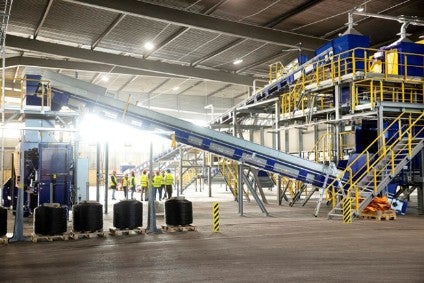
Swedish recycling specialist the Sysav Group has launched what it claims is the world’s first automated sorting plant for post-consumer textiles on an industrial scale.
Sysav, which considers waste to be a resource that should, as far as possible, be reused and recycled, says with a sorting capacity of 24,000 tonnes of textiles per year, the plant will revolutionise Swedish textile recycling and create new markets for textile waste.
The 30m long machine is located at Sysav’s facility in Malmö and has been developed as part of the Siptex (Swedish Innovation Platform for Textile Sorting) research project, led by the IVL Swedish Environmental Institute, in collaboration with a broad consortium consisting of research institutes, authorities, and actors from different parts of the textile value chain.
CEO of Sysav Peter Engström says the facility will further the transition towards a more sustainable textile and fashion industry.
“With the Siptex facility as a new part of the value chain, other players can scale up their processes and accelerate textile recycling. It is a sustainable investment, both for Sysav and for the environment.”
The automated sorting is based on optical sensors that, with the help of near-infrared light, can sort textiles according to colour and fibre composition with high precision. This makes it possible to handle large textile flows while at the same time producing textile fractions that match the needs of textile recyclers and textile companies.

US Tariffs are shifting - will you react or anticipate?
Don’t let policy changes catch you off guard. Stay proactive with real-time data and expert analysis.
By GlobalData“This is the piece of the puzzle that has been missing in order to be able to recycle textiles on a large scale,” adds Anna Jarnehammar, deputy CEO of the IVL Swedish Environmental Institute. “It will provide environmental benefits and strengthen Sweden’s position as a pioneer in innovation and the circular economy.”
Erik Perzon, textile expert at the IVL Swedish Environmental Institute, explains there has previously been a “bottleneck” where the recycling techniques exist but the flows required have been lacking.
“In order to be able to recycle textiles on a larger scale, consistent quality and large volumes are required, and this is what automatic sorting can deliver. This is the link between collected textile waste and high-quality fibre-to-fibre recycling.”
He adds there is great potential to increase textile recycling in Sweden with only “a few percent” of all textile waste in the country being recycled today.
“An average Swede throws eight kilos of textile in the waste bin every year, almost 200 tonnes of textile a day. It’s a huge waste of resources. In addition to the climate impact, large amounts of water and chemicals are also used in textile production. If we can avoid new production by taking advantage of the textiles that are already on the market and keeping the textile fibres in the cycle for as long as possible, this is a huge win from a resource and sustainability perspective.”
A four-year study revealed last month that 82% of what is considered apparel and textile waste can actually be renewed and resold, effectively meaning brands are sitting on their next supply chain.
The findings come as a report published by Accelerating Circularity, Inc has said textile waste must become the industry’s new raw material, and issued a call to action for brands and retailers, waste collectors, and recyclers as part of its vision to prove the feasibility of textile-to-textile circular systems.
Meanwhile, Swedish fashion group H&M last debuted the first retail model of the garment-to-garment recycling system pioneered by the Hong Kong Research Institute of Textiles and Apparel (HKRITA) in one of its store in the country.



